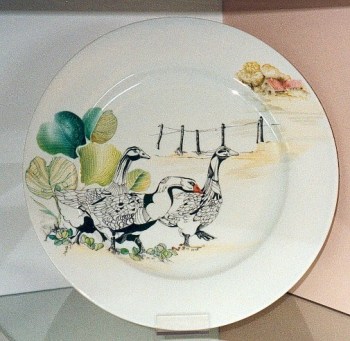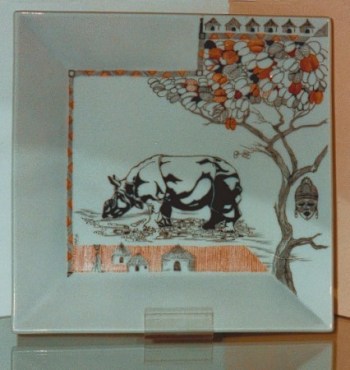

My idea was to transform photos I liked into a design for china. I saw the ducks in a magazine somewhere I can't remember, but took it out, as I always do when I see something I can use for inspiration one day.
I looked very carefully at the birds and noticed the feathers' shape and pattern, how the shadows made the bird sculptural, and every little detail I could see at the eye, the beak and the feet.
Then I traced everything possible, and had some copies made, in a bigger scale. On one of those copies I did my drawing, added the little landscape, the leaves and the poles. Again tracing onto the china with graphite paper.
The same procedure with the rhinoceros. Here the surroundings are inspired from my memories. I know the people in Africa live in round cottages, and that the earth is red in some places. The tree is a bit worn out by the heat, and I did the mask to connect the image of the person at the houses with something in the landscape.
1st fire:
Mix matte black with pen oil (I use RCP thinner on waterbase, because
I have been painting for about 45 years now, and the turps aren't good
for me anymore) Draw the animal very carefully, fill out the shadows in
black, and connect the lines nicely.
Draw the small leaves in the foreground in normal black, and draw the poles. Mix a bluegreen for penwork and draw the two green leaves. Fire.